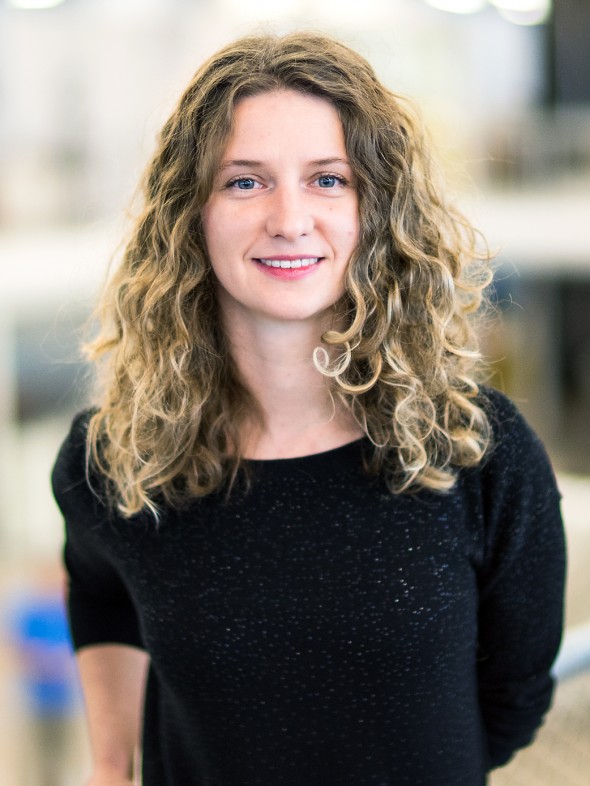
Mariana Popescu
32
ETHZ
Country of birth: Romania
She developed a construction process that turns knitted textiles into concrete buildings—saving money, carbon, and time
Mariana Popescu has developed a process and accompanying computational tools capable of turning knitted textiles into complex molds for concrete buildings. Her innovation makes it possible to build complex custom-made designs faster, with less waste and reduced carbon emissions.
“If you really want to make good structures that use less material, you end up having complicated geometries that are very often doubly curved or have other features that are difficult to mold,” says Popescu. Traditional construction that uses wood or foam supported by heavy scaffolding to create forms for pouring concrete takes months and limits what shapes are possible. All you have to do is look at a sweater, she says, to see that textile materials are perfect for making a wide array of holes, channels, and other complicated 3D shapes that are sought after in contemporary buildings.
So Popescu developed algorithms that automatically translate an architectural design into a textile-based mold that can be knitted by industrial machines in mere hours. The resulting mold is lightweight and flexible. Popescu, with the rest of her team, developed a system that uses steel cables to hold the mold in place while concrete is poured over it.
Popescu’s innovation is an efficient and ecologically conscious way of building complex structures with a minimal ecological footprint, in record time, and at low cost. It also has the potential to speed up construction of low-cost, sturdy, lightweight structures in settings like refugee camps, war zones, and sites of natural disasters.